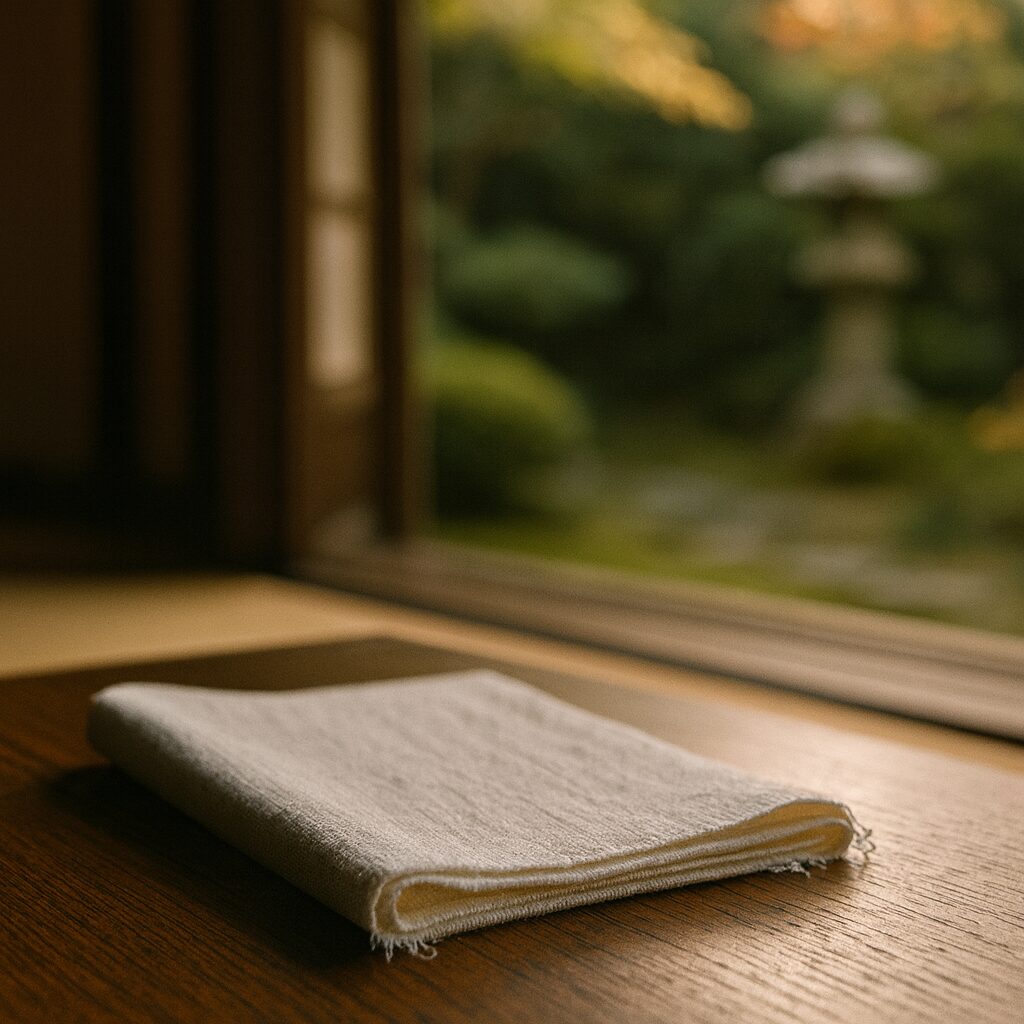By Kokoro Still
Light care that rinses, dries, and folds keeps a tenugui ready for everyday use.
Where quiet, sufficient care answers in use—at the line as weight leaves, folded at rest, opened as warmth returns—Kokoro can be sensed.
A tenugui (手拭い) is a flat-woven rectangular cotton cloth used in daily life in Japan—quick to wash, quick to dry. Typically about 33–36 × 90 cm (≈13–14 × 35.5 in), its edges are often left as cut ends that may lightly fray; patterns may be dyed or left plain. It is used mainly for hand-drying or as a head covering and is kept ready by simple care.
In the Hand
In the hand, care is exchange, not display.
At use, the tenugui dries the hands. Water gathers and is carried away; the cloth grows heavy in the palm. Rinsed, wrung, and lightly straightened, it is made ready for the line.
No ceremony—only the small exchange of warmth from the hand into cotton, and back.
What remains is a clean plainness. The day stays quiet.
On the Line
On the line, care begins as release.
Rinsed, lightly wrung, and lightly straightened, the tenugui is lifted to the line—no bright color, plain cotton, still. A breeze crosses the engawa; the cloth moves slightly and comes to rest, its dampness leaving without a sound.
The engawa boards are cool. Light is gentle enough to be felt on skin, and somewhere between threads and air—in the thin moment as weight is set down—Kokoro can be sensed.
The Small Repair
At the edge, the smallest care is enough.
In the afternoon, a thread appears at the edge. Not a flaw to hide, not an ornament to praise—just a thread. A quick trim with scissors; between fingers the edge lies flat again. A return to readiness.
Folded Light
At rest, care becomes readiness.
Once dry and brought in, the tenugui cools to the room, keeping a faint warmth from the morning. Spread across the table once, then folded twice, it becomes a quiet shape—not restraint for its own sake, but kept ready so that when the hand reaches, something gentle will be there. Later, it opens to the hand again.
A tenugui does not ask to be seen. Through this quiet loop—used, lightly rinsed and lightly straightened, dried, brought in and folded, then opened again—the routine of care stays nearly silent. Where cloth is made ready, Kokoro can be sensed, and the everyday becomes enough.



Comments